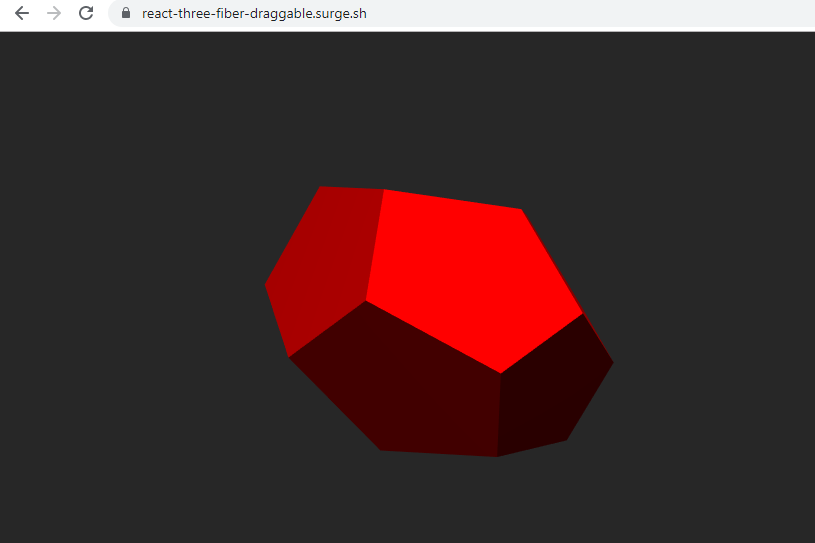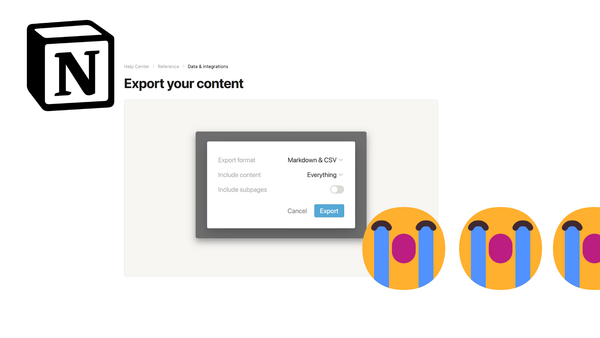Creating a Draggable Shape with React Three Fiber

I recently became interested how to render 3D graphics in the browser. I think WebGL is an extremely powerful technology and may one day become an important way of rendering content on the web.
There are various frameworks and tools available to use WebGL such as Babylon.js and three.js. To me, three.js looks the most promising for the use cases I am interested in.
For simple examples, three.js works beautifully but I think more complex applications can easily become unwieldy when using this framework. Thus I was very happy to come across react-three-fiber, which provides a wrapper around three.js using React. React, for all its shortcomings, is a powerful way to keep code modular and maintainable.
To get my hands dirty with this library, I have created a little example of an application that renders a Dodecahedron and allows dragging this shape by tapping or clicking and dragging with the mouse.

Here the link to the deployed application:
react-three-fiber-draggable.surge.sh
And here the link to the source code:
github.com/mxro/threejs-test/tree/master/test1
I think the source code is pretty self-explanatory. Essentially all logic is encapsulated into index.js:
import ReactDOM from 'react-dom';
import React, { useRef, useState } from 'react';
import { Canvas, useThree, useFrame } from 'react-three-fiber';
import { useDrag } from 'react-use-gesture';
import './index.css';
function DraggableDodecahedron() {
const colors = ['hotpink', 'red', 'blue', 'green', 'yellow'];
const ref = useRef();
const [colorIdx, setColorIdx] = useState(0);
const [position, setPosition] = useState([0, 0, 0]);
const { size, viewport } = useThree();
const aspect = size.width / viewport.width;
useFrame(() => {
ref.current.rotation.z += 0.01;
ref.current.rotation.x += 0.01;
});
const bind = useDrag(
({ offset: [x, y] }) => {
const [, , z] = position;
setPosition([x / aspect, -y / aspect, z]);
},
{ pointerEvents: true }
);
return (
<mesh
position={position}
{...bind()}
ref={ref}
onClick={(e) => {
if (colorIdx === 4) {
setColorIdx(0);
} else {
setColorIdx(colorIdx + 1);
}
}}
onPointerOver={(e) => console.log('hover')}
onPointerOut={(e) => console.log('unhover')}
>
<dodecahedronBufferGeometry attach="geometry" />
<meshLambertMaterial attach="material" color={colors[colorIdx]} />
</mesh>
);
}
ReactDOM.render(
<Canvas>
<spotLight
intensity={1.2}
position={[30, 30, 50]}
angle={0.2}
penumbra={1}
castShadow
/>
<DraggableDodecahedron />
</Canvas>,
document.getElementById('root')
);
Noteworthy here is that instead of creating a Material, Geometry and Mesh directly, they are defined in JSX. Also, instead of having to request an animation frame, we are using the hook useFrame to drive the animation for our component.
I think it can easily be seen how react-three-fiber could be used to make three.js applications more modular, for instance by handling the animation specifically for each component. I think this project is also testament to the power of React in that it cannot only be used with the DOM but also with other rendering technologies.





